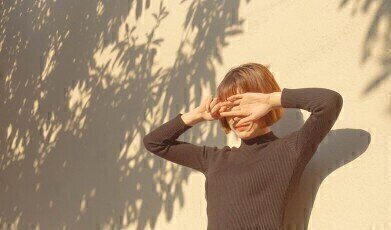News & Views
What’s the Best Way to Safely Watch a Solar Eclipse?
Mar 16 2015
We all know that staring directing at the sun is extremely bad for our eyes. But can the same be said for a solar eclipse? Experts agree that it is. However, there are ways we can safely watch the solar eclipses – here’s how…
Never stare directly at the sun
At no point during a solar eclipse is it ever safe to look at the sun directly. Even when a tiny sliver of the sun’s rays are visible, just one per cent of the sun’s visible light is over 4,000 times brighter than the full Moon. Add to this that the retina of an eye does not have pain receptors, and an unprotected eye can burn in 30 seconds. You may not even know that you have damaged your eyes until hours later.
Can I use a telescope?
Experts state that you should never look at the sun through a telescope, unless you have the proper filters in place. Make sure that these filters are placed on the front of the telescope, and never ever rely on filters at the eyepiece to block the sun’s rays.
Only use approved filters
There are countless products available that are supposed to have been tested for watching eclipses. For example, sunglasses, x-ray films and camera filters. However, these should be avoided as they are all dangerous and can ruin your sight. This is because although they do manage to stop some of the incoming visible spectrum of light entering the eye, they do not stop the dangerous infrared and ultraviolet rays. Choose Mylar filters which are specifically manufactured for solar light.
The Pinhole Projection Method
For those who do not have a telescope, or equipment to view the eclipse, there is a simple and safe way to watch the event. Looking at a projected image of the Sun means you do not have to look directly at the Sun. Using the pinhole projection method allows you to do this easily and without danger.
To make one you should:
- Take two sheets of paper and make a very small hole in the middle of the first one, using a pin or a thumbtack. The hole should be round and uniform.
- The second piece of paper acts as a screen for the first. Hold the first piece of paper in front of the Sun.
- Do not look at the Sun directly. Hold the first piece of paper at a distance so that you can now see an upside down version of the Sun on the second piece of paper.
- If you want to see a larger image of the Sun move the second piece of paper away from the sheet with the pinhole.
Europe’s biggest solar eclipse since 1999 is set to occur on the 20th March this year. Experts estimate that nearly 90 per cent of sunlight will be blocked over parts of Europe, with London experiencing 84 per cent less light. If you’re planning on seeing the solar eclipse, here are the best places to catch it.
Digital Edition
Lab Asia 31.2 April 2024
April 2024
In This Edition Chromatography Articles - Approaches to troubleshooting an SPE method for the analysis of oligonucleotides (pt i) - High-precision liquid flow processes demand full fluidic c...
View all digital editions
Events
Apr 28 2024 Montreal, Quebec, Canada
May 05 2024 Seville, Spain
InformEx Zone at CPhl North America
May 07 2024 Pennsylvania, PA, USA
May 14 2024 Oklahoma City, OK, USA
May 15 2024 Birmingham, UK


















